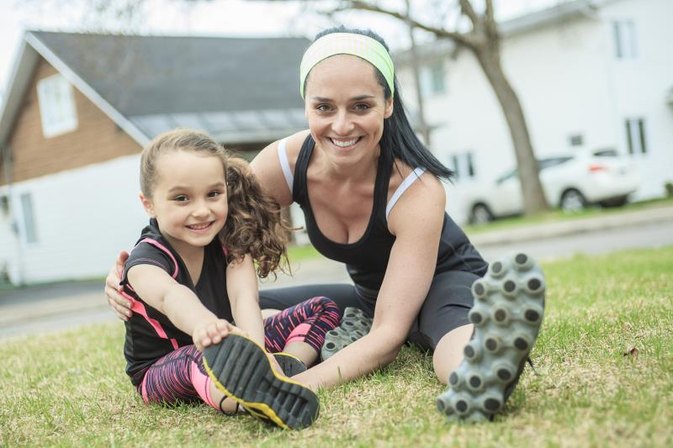Overview
Scoliosis is a condition characterized by an abnormal lateral curvature of the spine. In some cases, this condition is congenital; that is, it is present at birth. In other cases, it can be caused by weakness of the muscles in children with spina bifida, muscular dystrophy or other diseases, according to the University of Maryland Medical Center. Although exercise will not cure scoliosis, some medical professionals believe that certain exercises may reduce pain and other symptoms of scoliosis in children.
Scoliosis exercises should not replace medical attention. Check with your child’s pediatrician before teaching scoliosis exercises to your child.
Hamstring Stretch
The hamstring stretch helps strengthen the muscles of the lower back and upper legs, which support much of the body’s weight. Have your child lie on his back. Your child should lift his right leg to his chest, and place a yoga strap across the arch of his right foot, according to the National Scoliosis Foundation. Your child should then straighten his right leg, pointing his heel toward the ceiling. Ask your child to lower his leg and repeat the exercise with his left leg.
Slouch Stretch
Like the hamstring stretch, the slouch stretch loosens and strengthens the muscles of the legs and lower back, according to Mark Evans, author of “Yoga, Tai Chi, Massage, Therapies and Healing Remedies.” Have your child start by sitting on a chair with her feet on the floor. Her head should be down so the upper back curves. Your child should then lift her right leg to straighten it in front of her. She should then lower her leg and repeat the exercise with the other foot.
Relaxation Stretch
The relaxation stretch is a simple pose that may help alleviate lumbar pain caused by scoliosis. Have your child lie on his back on a yoga mat or other soft surface, advises the National Scoliosis Foundation. You should place a rolled towel under the lumbar area of your child’s back, and a washcloth under your child’s neck and knees. Have your child stretch his arms out from his sides and allow tension to release from his back and shoulders. Your child should hold this pose for at least five minutes to allow his muscles to relax.
Source:








